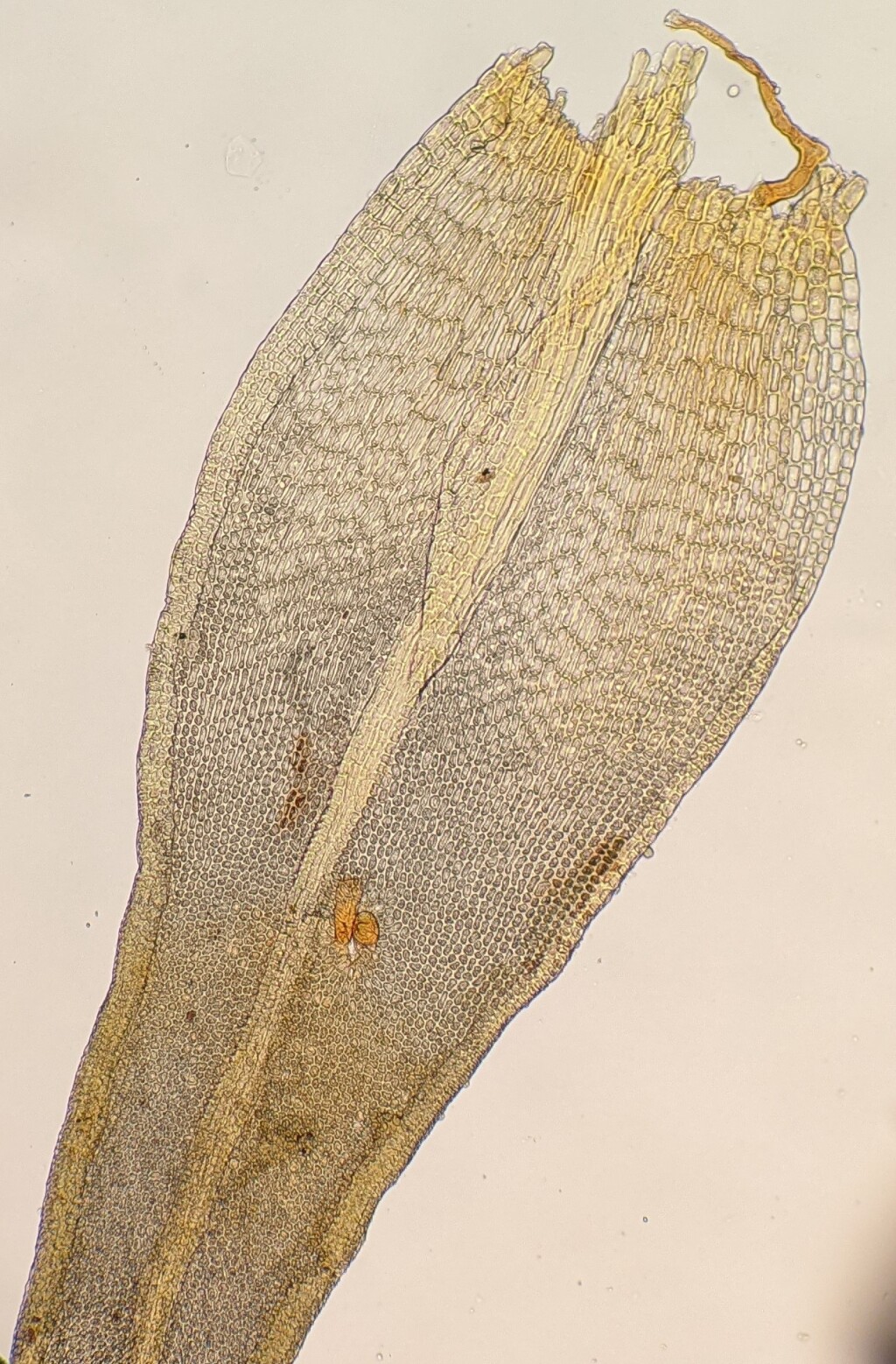Orthotrichum assimile
Müll.Hal.Asexual reproduction by fusiform gemmae 5–7 cells long on leaves. Loose or dense tufts mostly on trees, rarely on calcareous or non-calcareous rocks, 3.5–12 mm tall, yellow to olive-green. Stems orange with frequent orange- to red-brown rhizoids, tomentose toward base. Leaves erect- to wide-spreading when moist, erect-appressed when dry, ovate-lanceolate to lanceolate, 1.8–4.1 mm long, 0.6–1 mm wide, carinate; apex rounded-acute, acute or acuminate; costa strong, ending below apex; margin entire, rarely dentate apically, recurved, without a border; laminal cells in apical half round to elliptic, isodiametric, 6.5–21 μm long, 6.5–20 μm wide, each with 2–4 mostly unbranched papillae; basal laminal cells rectangular, 15–100 μm long, 7–10 μm wide, smooth, forming a region that transitions into shorter cells at c. 1/4–1/3 the way to leaf apex. Seta to 1 mm long, yellow to brown, not or slightly twisted anticlockwise. Calyptra plicate, usually sparsely hairy. Capsules immersed to emergent, erect, narrowly cylindric to urceolate, 1.3–2 mm long, straight, yellow, deeply 8-ribbed. Peristome double; exostome teeth 8, recurved; endostome segments 8. Operculum mamillate, c. 0.3 mm long.
EGU, HSF, HNF, HFE, VAlp. New Zealand and southern South America. Along the Great Dividing Range east from near Licola and in East Gippsland in woodland, sclerophyll forest, rainforest and subalpine woodland.
 Spinning
SpinningSynonyms
Lewinsky-Haapasaari, J.; Ramsay, H.P. (2006). Orthotrichum. Flora of Australia 51: 218–224.


